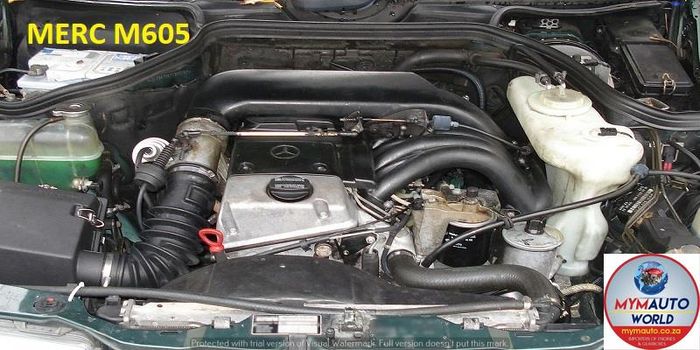Opel Corsa Engine: Performance and Dependability for Your Vehicle
Opel Corsa Engine: Performance and Dependability for Your Vehicle
Blog Article
Exploring the Inner Workings of a Compact Vehicle's Engine System
As drivers, we usually take for approved the intricate procedures that happen within the boundaries of our car's engine system. In this expedition of a small vehicle's engine system, we will certainly untangle the inner functions of this mechanical harmony, losing light on the mysteries that drive us ahead on our daily trips.
Combustion Process Overview
The burning procedure in a small lorry's engine system is an important mechanism that effectively transforms fuel right into energy to power the car. This procedure occurs within the burning chamber of the engine, where gas and air mix, fire up, and generate regulated explosions. The burning procedure contains four major phases: intake, power, compression, and exhaust.
During the consumption stage, the piston relocates downward, pulling in a combination of air and gas into the burning chamber. The following stage, compression, involves the piston relocating upward, pressing the air-fuel mixture to boost its potency. Ultimately, in the power stage, the ignition system fires up the pressed mixture, causing a rapid growth of gases that forces the piston back down. This descending movement produces the power required to drive the car. Ultimately, in the exhaust stage, the burnt gases are eliminated from the combustion chamber with the exhaust shutoff, preparing the chamber for the next cycle. This cyclic combustion procedure is basic to the operation of a small lorry's engine system, guaranteeing effective power conversion for propulsion.
Piston and Cylinder Interaction

The piston's exact fit within the cylinder is vital for maintaining optimal compression and protecting against power loss during combustion. Limited clearances between the piston and cylinder wall surfaces make sure effective sealing, permitting the piston to move smoothly without allowing gases to leakage past. Correct lubrication is likewise vital to lower rubbing and wear in between these elements, improving durability and efficiency.
Furthermore, the layout and materials made use of in producing the piston and cylinder effect engine efficiency and durability. Modern engines usually employ light-weight yet resilient products like aluminum alloys for pistons and cyndrical tube liners to minimize inertia and enhance thermal effectiveness. Overall, the harmonious communication between the piston and cyndrical tube is fundamental to the engine's performance and total performance.
Gas Shot System Performance
Gas shot systems in compact automobile engines play a crucial function in specifically delivering fuel to the burning chamber for controlled and effective ignition. The gas shot a fantastic read system functions by injecting gas right into the burning chamber at the optimal moment during the engine's procedure (opel corsa engine). This specific timing ensures that the fuel mixes uniformly with the air for correct burning, leading to enhanced fuel effectiveness and lowered exhausts
There are primarily two sorts of fuel injection systems utilized in small automobile engines: port gas shot (PFI) and straight fuel shot (DFI) PFI systems inject fuel into the consumption port prior to the consumption shutoff, while DFI systems infuse gas straight right into the burning chamber. Both systems have their benefits, with DFI using much better gas atomization and PFI supplying a much more economical remedy.
Recognizing Engine Air Conditioning Systems
Efficient procedure of a small lorry's engine relies greatly on the performance of its cooling mechanisms. The air conditioning system in a small vehicle usually is composed of several elements functioning with each other to regulate the engine temperature. Comprehending these engine air conditioning mechanisms is important for keeping the performance and durability of a small lorry's engine system.

Exhaust System Elements Explained
The optimum performance of a compact car's engine cooling systems depends upon a corresponding system called the exhaust system, which consists of various crucial parts for ensuring efficient emissions and engine performance. The exhaust system includes parts such as the exhaust manifold, catalytic converter, muffler, and tailpipe. The exhaust manifold accumulates exhaust gases from the engine's courses and cyndrical tubes them to the catalytic converter. The catalytic converter after that transforms dangerous contaminants in the exhaust into less damaging emissions before launching them via the muffler and tailpipe.
One critical element of the exhaust system is the oxygen sensor, which monitors the oxygen degrees in the exhaust gases to help manage fuel intake and make certain ideal engine performance. opel corsa engine. In addition, the resonator may exist in some exhaust systems to minimize noise degrees. In general, the exhaust system plays an essential function in maintaining engine performance, decreasing harmful discharges, and ensuring a quieter driving experience for portable vehicle proprietors

Conclusion
In verdict, the compact automobile's engine system is a complex combination of parts that interact to facilitate the combustion procedure, transform fuel into power, and expel waste gases. Comprehending the internal operations of the engine system, including the piston and cylinder communication, gas injection system, engine cooling systems, and exhaust system parts, is essential for preserving optimum efficiency and performance of the vehicle.
The combustion procedure in a portable vehicle's view website engine system is a vital system that successfully transforms gas into energy to power the car.Fuel injection systems in small automobile engines play an essential duty in precisely delivering fuel to the combustion our website chamber for efficient and controlled ignition.There are mainly two types of fuel injection systems used in portable lorry engines: port gas shot (PFI) and straight fuel injection (DFI) Understanding these engine cooling mechanisms is vital for maintaining the efficiency and long life of a small automobile's engine system.
The ideal functioning of a compact vehicle's engine air conditioning devices depends on a corresponding system understood as the exhaust system, which makes up various important components for ensuring reliable exhausts and engine performance.
Report this page